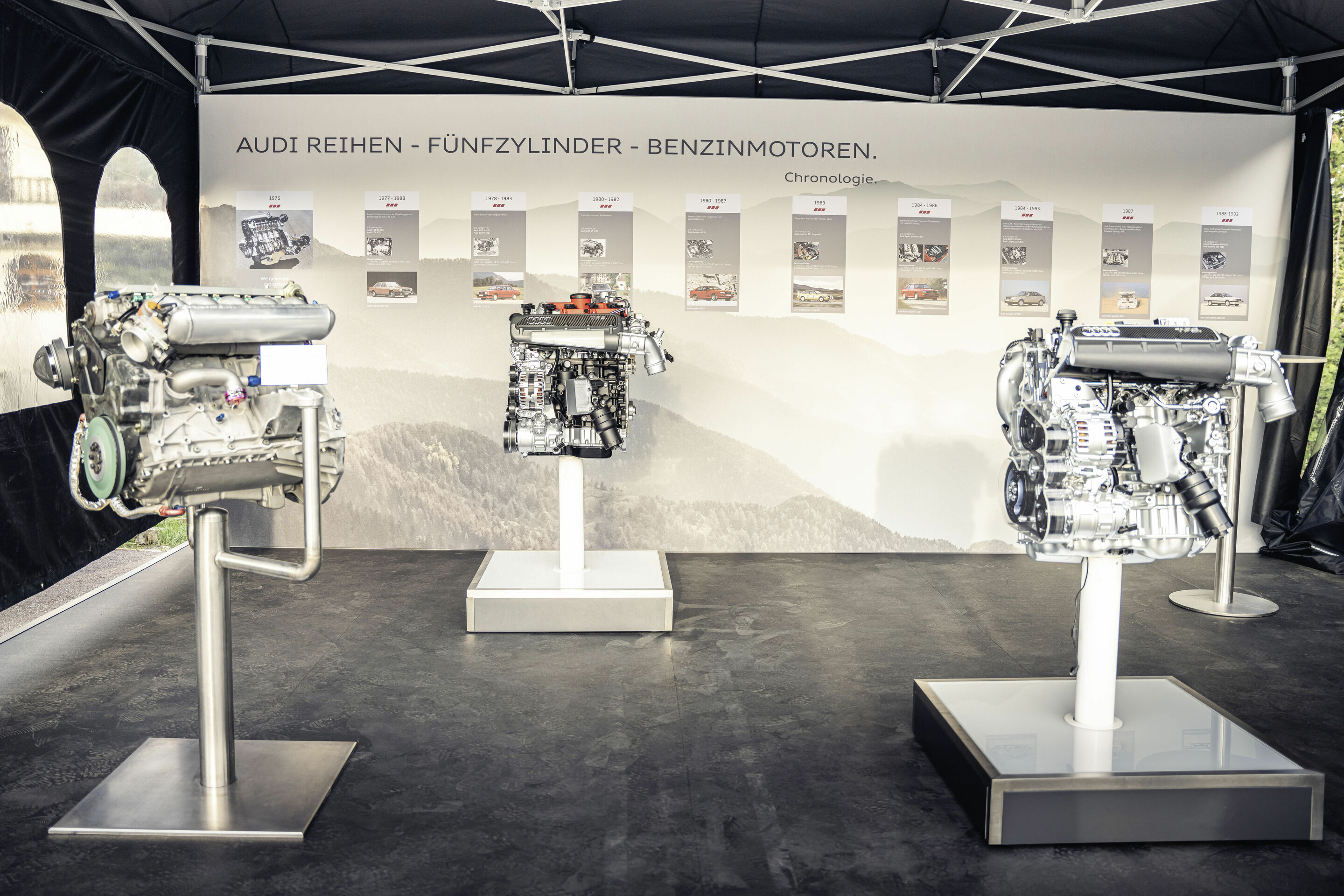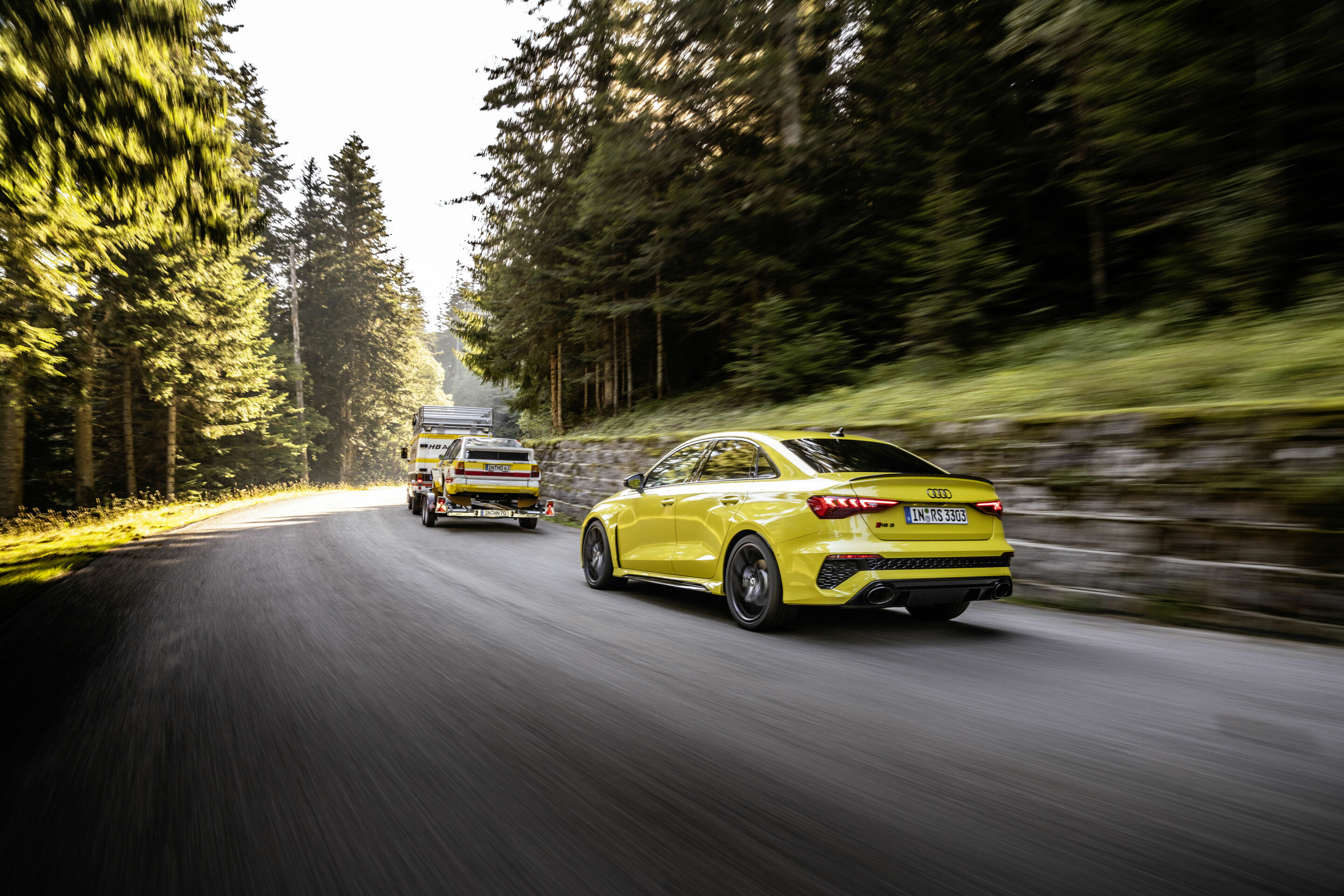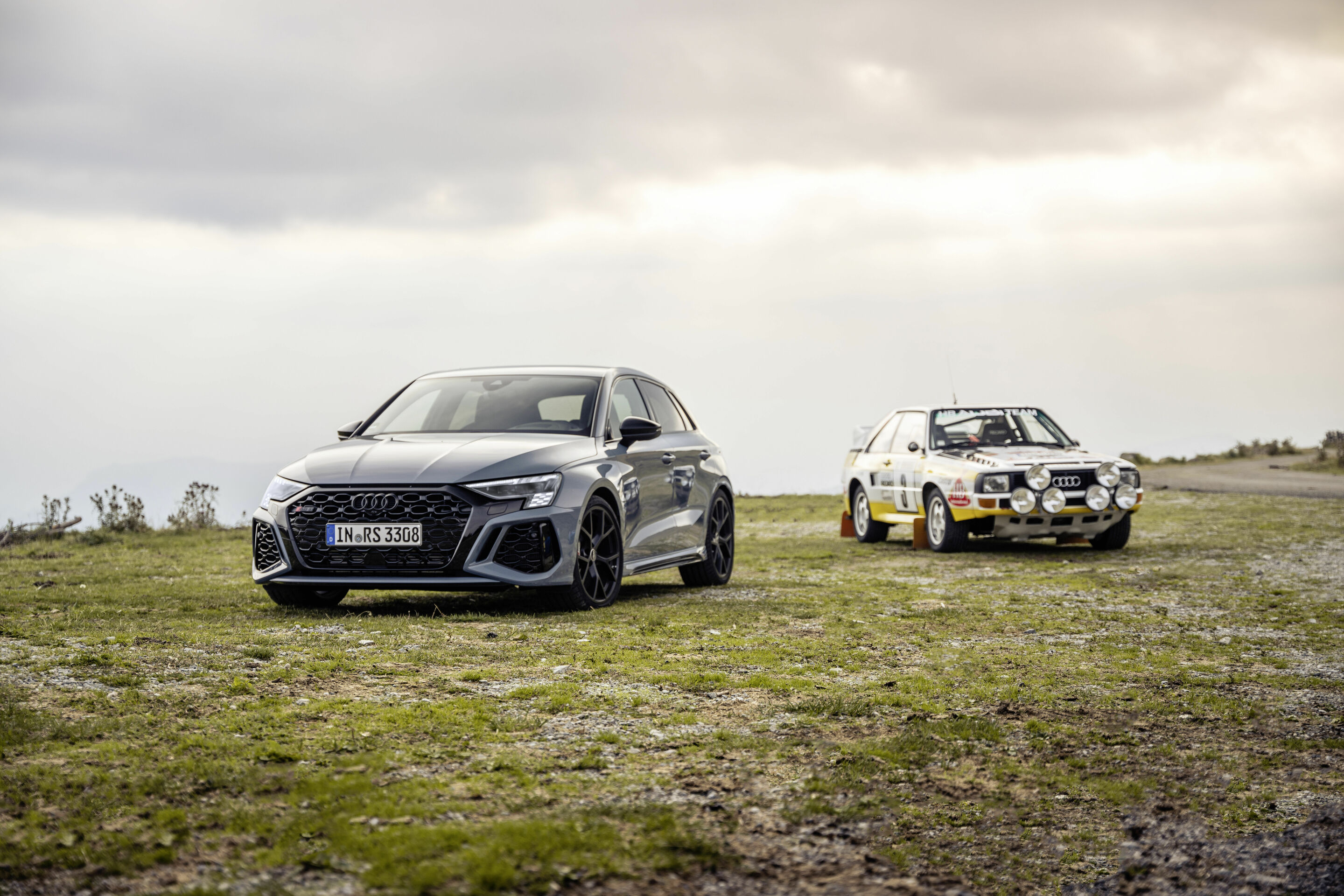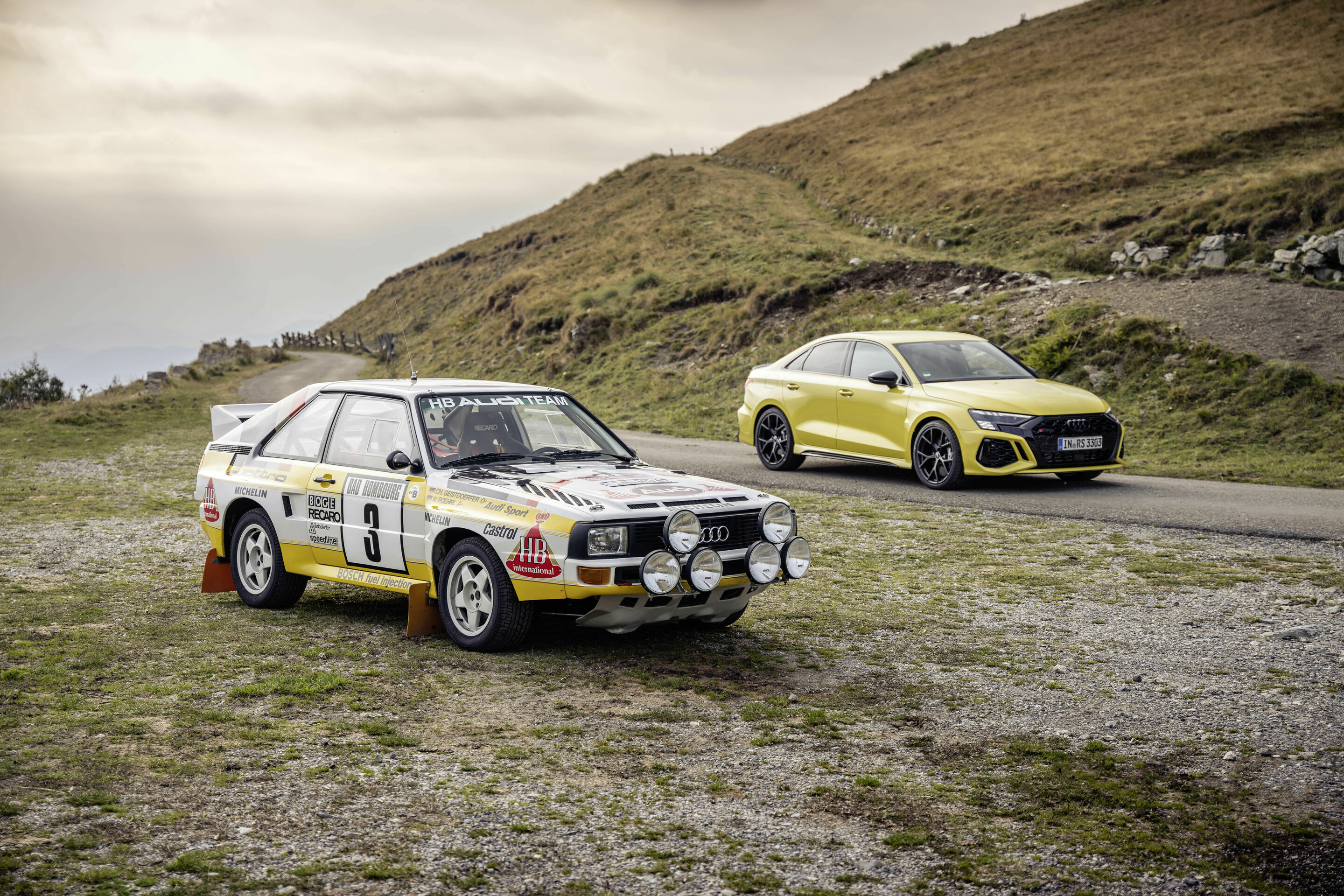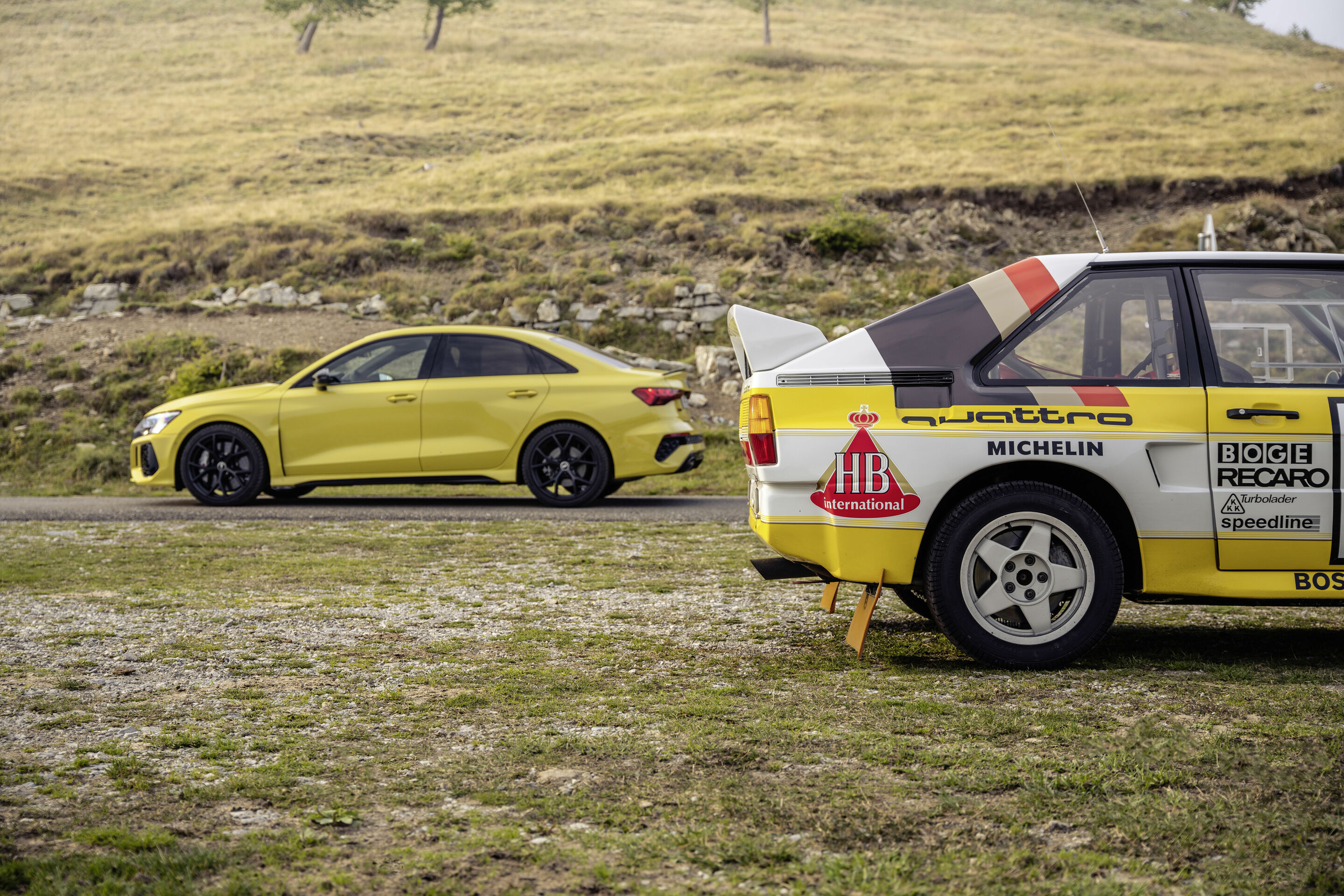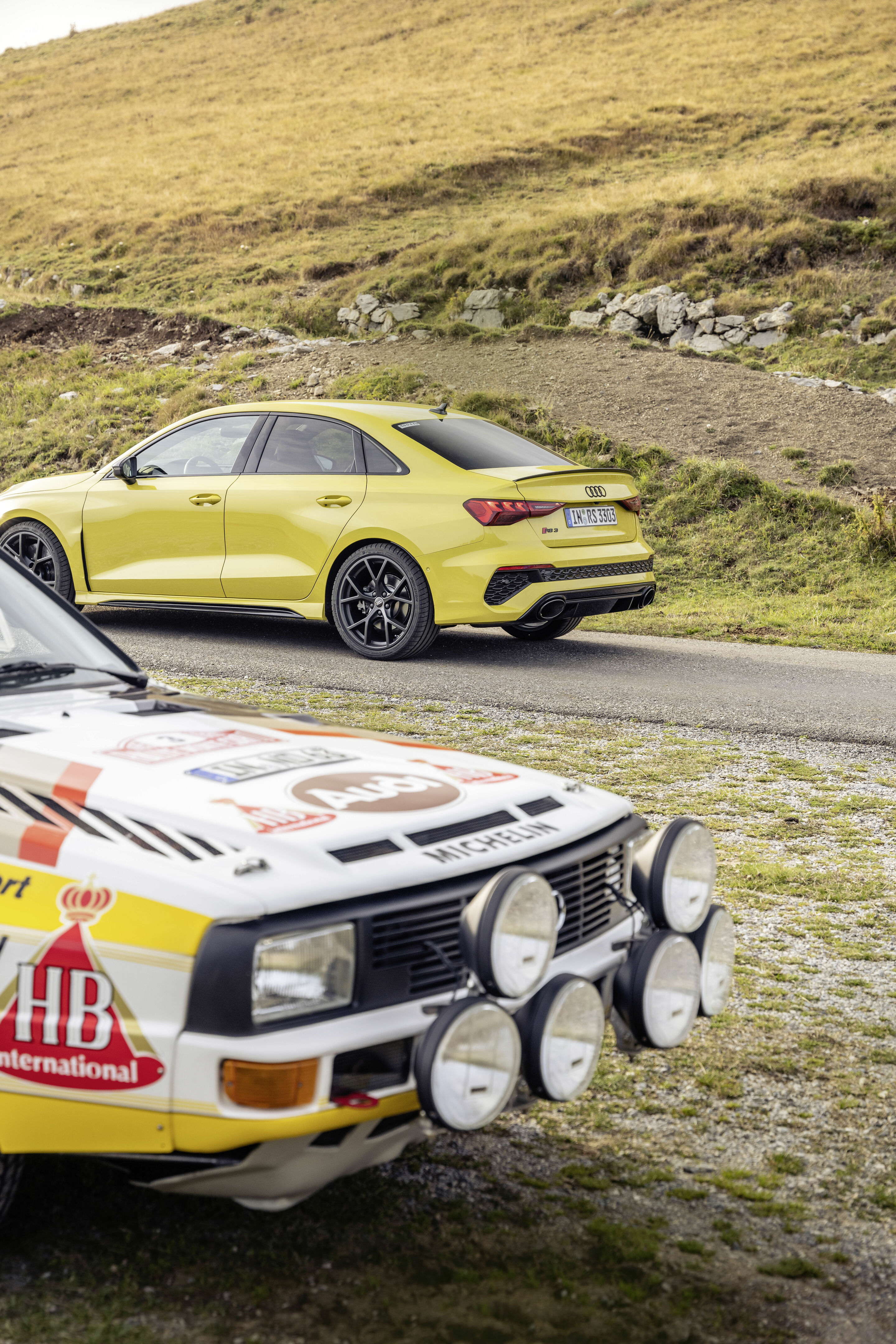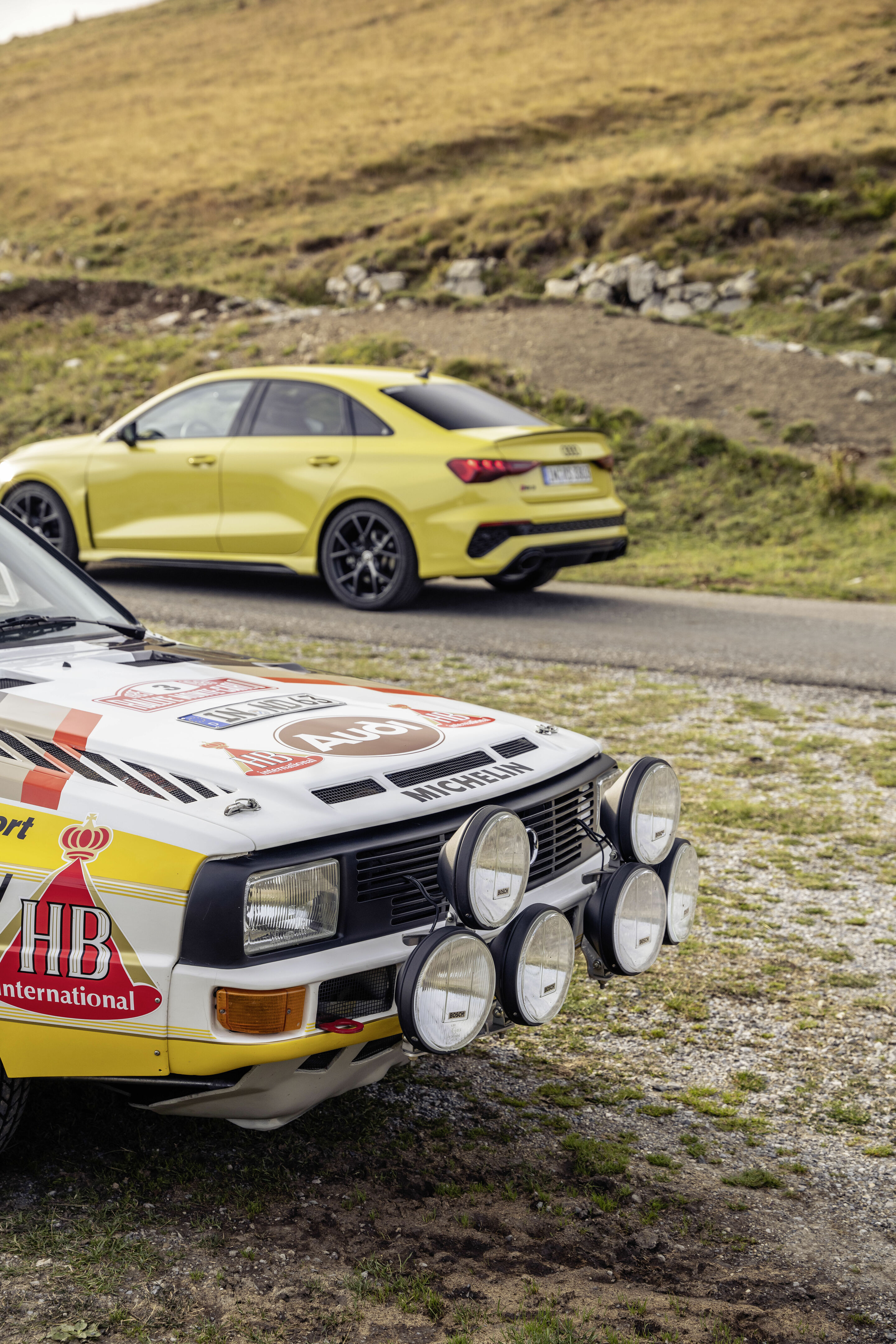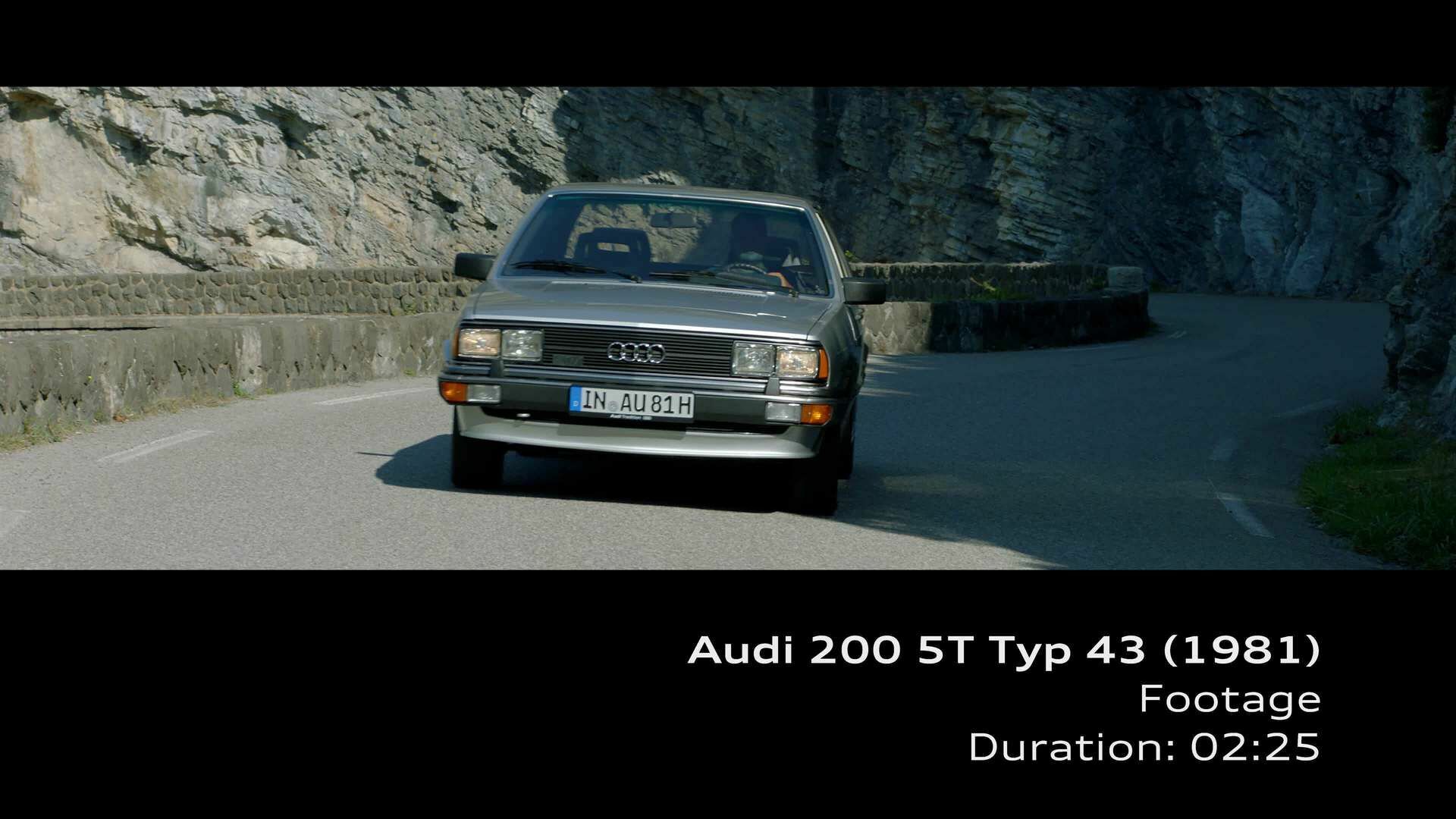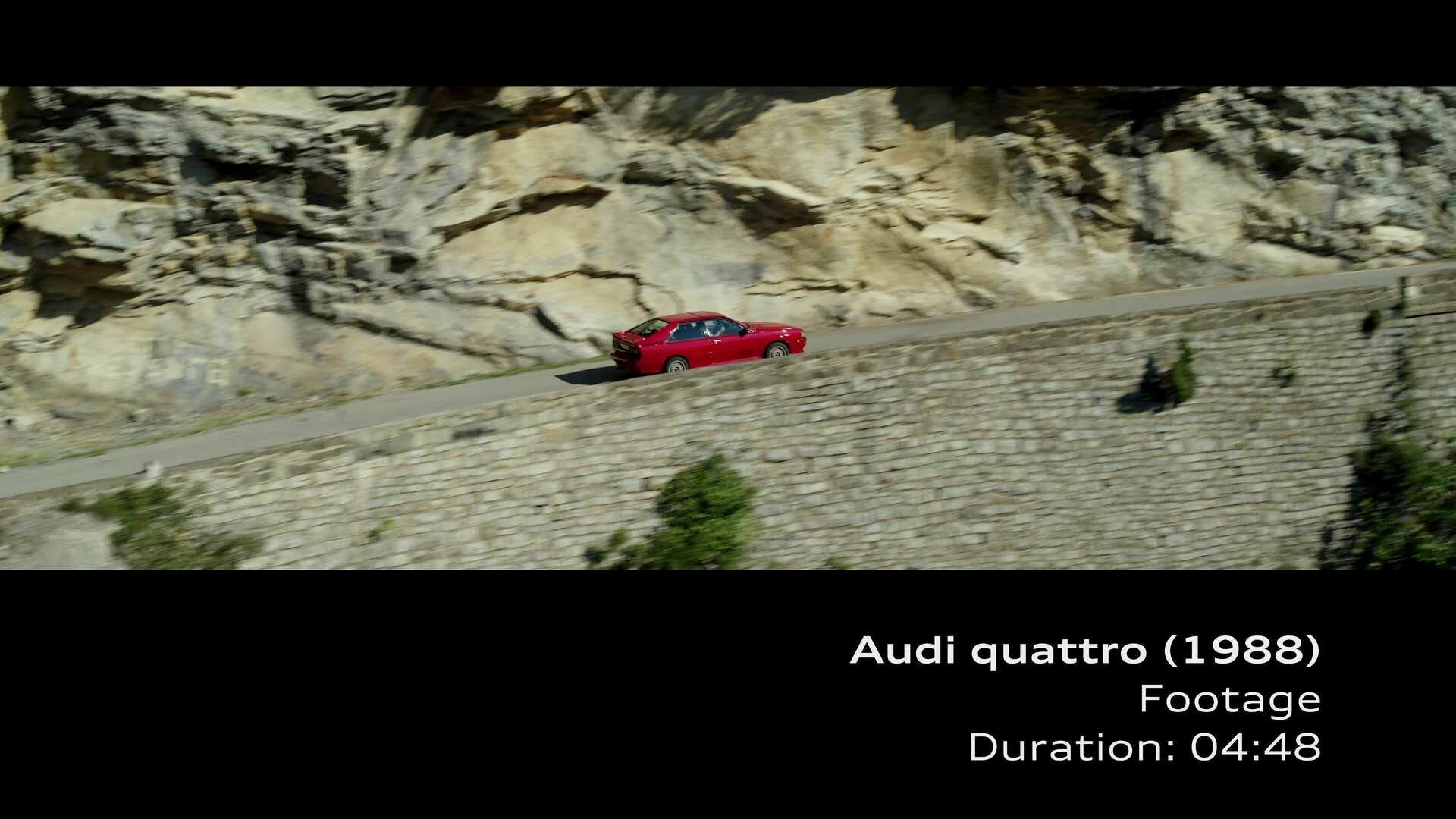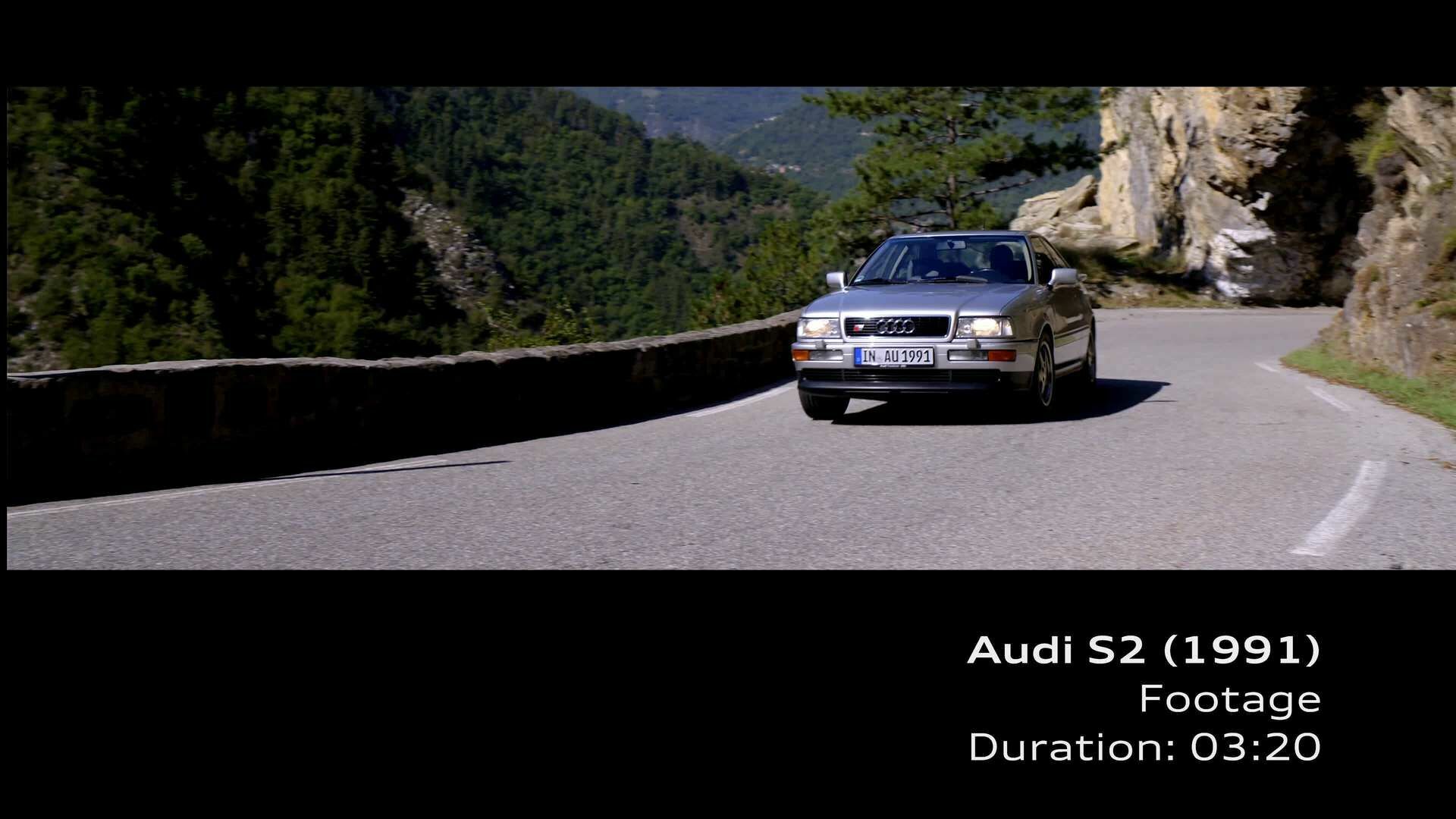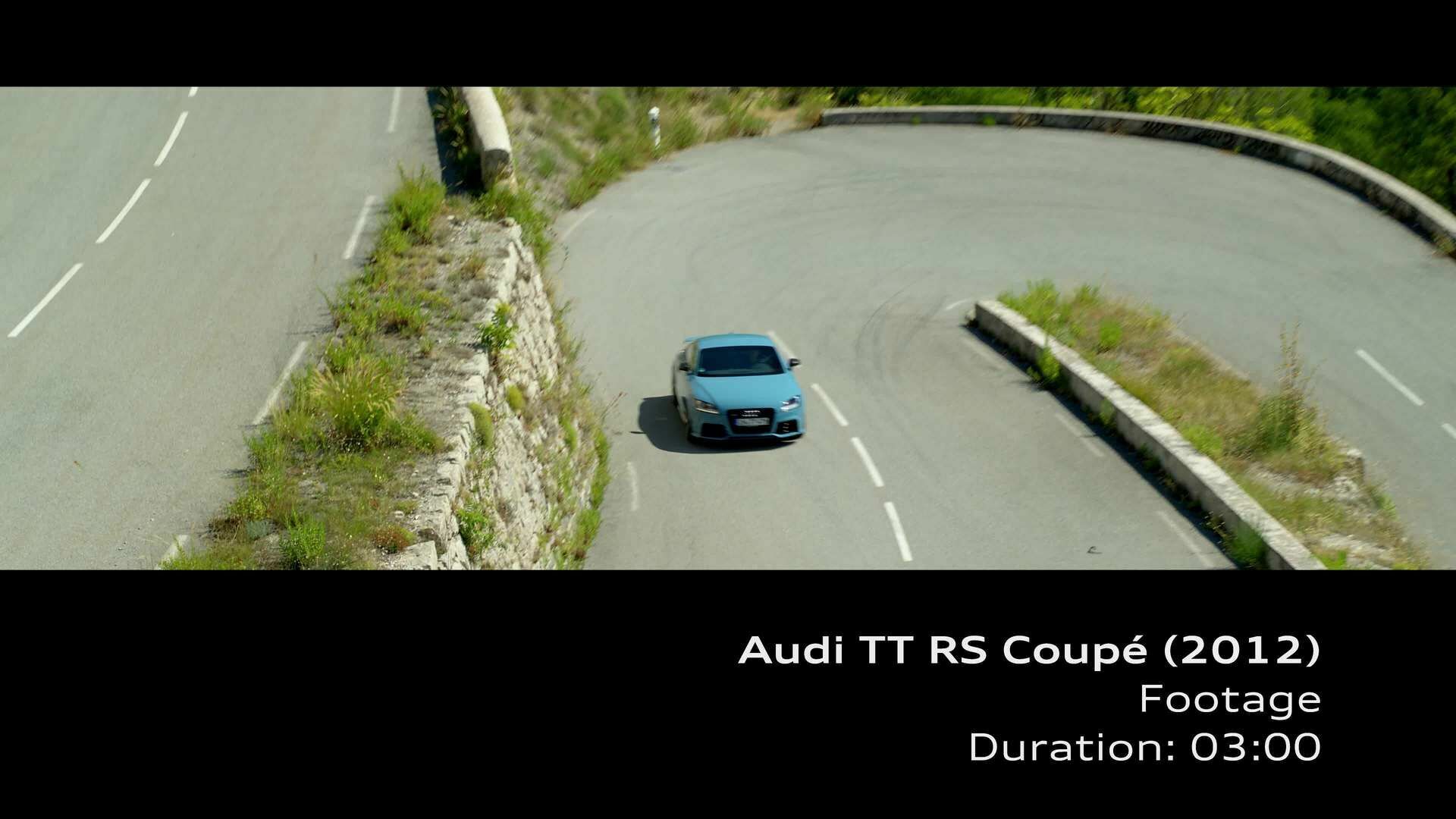Powerhouses: five-cylinder engines at Audi
- Five-cylinder engine delivering 136 hp presented for the first time in 1976 in the Audi 100
- Successful engine concept for series production and rallying
- Audi RS 3: modified five-cylinder engine with more torque
Audi presented the first five-cylinder gasoline engine 45 years ago in the second-generation Audi 100. Enhancements and new developments followed with turbocharging, exhaust gas purification and four-valve technology, rally engines, and five-cylinder diesel units. The 2.5 TFSI won the “International Engine of the Year” award nine times in a row. Today, the high-performance engine in the new Audi RS 3 Sportback carries on the five-cylinder engine tradition – with more power than ever.
The five-cylinder engines from Audi have achieved cult status – partly due to their successful deployment in motorsport and also on account of their reliability and economy. The engine’s unique 1-2-4-5-3 ignition sequence and the incomparable sound that comes with it make the driving experience so exhilarating.
The first five-cylinder gasoline engine powered the Audi 100 (C2) in 1976. The model, known internally as Type 43, was to be positioned higher than its predecessor in the market. The four-cylinder engines at the time were not suitable for this plan according to the developers. At the beginning of the 1970s, Audi engineers consequently discussed the possibility of introducing five and six-cylinder inline engines. The latter were ruled out due to the installation space required and unfavorable weight distribution. So those responsible opted for the five-cylinder inline engine, based on the new EA 827 engine concept. This four-cylinder inline engine was used throughout the VW Group in the 1970s – in the Audi 80 and Audi 100, for instance. The derived 2.1-liter five-cylinder engine produced 100 kW (136 hp). A modern injection system increased efficiency and power development. Delivery of the Audi 100 5E began in March 1977.
Also top class as an aspirated diesel engine
As early as 1978, Audi presented the first diesel version: a naturally aspirated diesel with a displacement of two liters and producing 51 kW (70 hp). One year later, the first turbocharged five-cylinder gasoline engine made its debut – another pioneering feat from Audi. With an output of 125 kW (170 hp) and 265 newton meters (195.45 lb-ft) of torque, it powered the new top model, the Audi 200 5T.
The five-cylinder gasoline engine in the 1980 Audi “Ur-quattro” had even more to offer. With turbocharging, an intercooler and permanent four-wheel drive, it constituted a powerful technical package for the racetrack and the road. Initially, it delivered 147 kW (200 hp). In 1983, the Finn Hannu Mikkola won the drivers’ title in the World Rally Championship in this car. In the same year, Audi introduced the wide-track Sport quattro, which was 24 centimeters (9.45 inches) shorter. It was powered by a newly developed four-valve five-cylinder unit made of aluminum with an output of 225 kW (306 hp). It made the Sport quattro the most powerful car built to date by a German company for use on public roads. The model formed the basis for a new Group B rally car, with the four-valve powerplant delivering 331 kW (450 hp) from the very start. It was used for the first time in the penultimate race of 1984, the Ivory Coast rally. The other eleven rounds of the season were contested by the Swede Stig Blomqvist in the Group B Audi quattro A2 producing 265 kW (360 hp). In the end, he won the drivers’ title and Audi took the manufacturers’ title.
Unforgettable: Walter Röhrl on Pikes Peak
Even after Audi withdrew from rallying in 1986 there were other racing highlights: in 1987, Walter Röhrl won the Pikes Peak Hill Climb (USA) in the Audi Sport quattro S1 (E2). The racing car developed 440 kW (598 hp). And the IMSA GTO excelled on the US touring car scene in 1989, delivering 530 kW (720 hp) – from little more than two liters of displacement.
Audi presented another milestone in automotive history at the International Motor Show in Frankfurt am Main in 1989: the Audi 100 TDI. It was the first production car with a five-cylinder direct-injection turbocharged diesel engine and fully electronic control. The powerplant generated 88 kW (120 hp) from a displacement of 2.5 liters. Audi continued to refine its range of five-cylinder gasoline engines. In 1994, the Audi RS 2 with an output of 232 kW (315 hp) came on to the market. As an Avant with the power of a sports car, it established a new automotive class.
1994 saw the five-cylinder units bow out of the B segment, when the Audi A4 (B5) was introduced. They were gradually replaced in the mid-1990s by the new V6 engines. The last five-cylinder engines, the 2.5 TDI in the Audi A6 and the 2.3 Turbo in the Audi S6, were phased out in 1997.
Turbo and direct injection in the TT RS
Then in 2009 there was a big comeback – with turbocharging and gasoline direct injection in the Audi TT RS. The transverse-mounted engine developed by quattro GmbH produced 250 kW (340 hp) from a displacement of 2.5 liters. The TT RS plus, which Audi presented in 2012, even reached 265 kW (360 PS).
In 2013, the RS Q3 established a new market segment as the first compact SUV. As in the TT RS and RS 3, the engine was a transverse-mounted 2.5 liter five-cylinder. At less than 50 centimeters (19.7 inches) long, it was a very compact motor.
This made the long-stroke engine (bore x stroke 82.5 x 92.8 millimeters [3.2 x 3.7 in]) perfect for transverse installation. Initially, it produced 228 kW (310 PS), but reached 250 kW (340 PS) starting in late 2014. The RS Q3 performance that followed in 2016 even reached 270 kW (367 PS); in 2019, the new edition of the RS Q3 brought 400 PS with 480 Nm of torque. An international jury of automotive journalists voted the five-cylinder motor “Engine of the Year” in its class nine times in a row since 2010.
Unmatched acceleration and top speed: the 2.5 TFSI in the RS 3
Today, the 2.5 TFSI appears in the new Audi RS 3 with more power than ever before. The new RS 3 models sprint from zero to 100 km/h (62 mph) in 3.8 seconds. Their top speed is limited to 250 km/h (155 mph), but 280 km/h (174 mph) is also available as an optional upgrade. With the RS Dynamic package and ceramic brakes, they can even reach a top speed of 290 km/h (180 mph). That makes the Audi RS 3 the best in its class in terms of acceleration and top speed. This is primarily due to the 500 Nm increase in torque, which is available between 2,250 and 5,600 rpm. That is 20 Nm more than its predecessor. As a result, the Audi RS 3 accelerates even faster from low rev ranges. The engine's maximum power of 294 kW (400 PS) is available earlier than before at 5,600 rpm and extends over a broad plateau to 7,000 rpm. A new engine control unit also increases the speed at which all of the drive components communicate with each other.
Fuel consumption of the models named above
Information on fuel/electricity consumption and CO2 emissions in ranges depending on the tires and alloy wheel rims used and on the equipment and accessories of the car.
Audi RS 3 Sportback
Combined fuel consumption in l/100 km: 8.8 – 8.3 (26.7 – 28.3 US mpg);
combined CO2 emissions in g/km: 201 – 190 (323.5 –305.8 g/mi)
Audi RS 3 Limousine
Combined fuel consumption in l/100 km: 8.7 – 8.2 (27.0 – 28.7 US mpg);
combined CO2 emissions in g/km: 198 – 188 (318.7 – 302.6 g/mi)
Audi TT RS Coupé:
Combined fuel consumption in l/100 km: 8.5 (27.7 US mpg);
combined CO2 emissions in g/km: 194 – 193 (312.2 – 310.6 g/mi)
Audi TT RS Roadster:
Combined fuel consumption in l/100 km: 8.7 (27.0 US mpg);
combined CO2 emissions in g/km: 200 – 199 (321.9 – 320.3 g/mi)
Audi RS Q3:
Combined fuel consumption in l/100 km: 9.0 – 8.8 (26.1 – 26.7 US mpg);
combined CO2 emissions in g/km: 206 - 201 (331.5 – 323.5 g/mi)
**Figures given with ranges depend on the tires/wheels used
